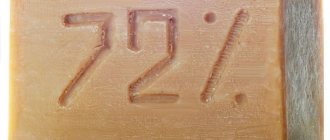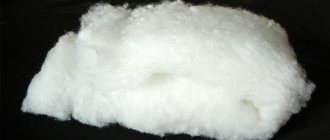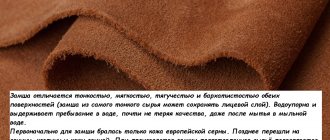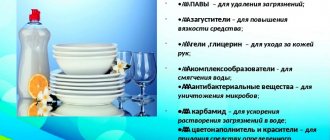What is soda?
Baking soda is a sodium salt that neutralizes acids. It is so unique and diverse in its manifestations that it has received several names and is successfully used in various fields of human activity. For example, every housewife is accustomed to the name baking soda, but chemists call it sodium bicarbonate. Depending on the chemical composition, soda powder can change its properties, from which it received several more names - soda ash, crystalline soda and others.
Sodium bicarbonate is found in sufficient quantities in nature, but humans need to extract it. Entire soda lakes are known - there are deposits of this valuable substance in Tanzania, California, and northern Russia. The Americans are richest in soda powder - their own deposits satisfy the needs of the country's population by forty percent.
As before, soda is extracted from minerals in soda lakes. Even in the first century AD, cases of obtaining soda powder from the evaporation of water from soda lakes became known, but the pure substance was obtained only in the first half of the 18th century, when one French naturalist de Monceau was able to obtain it experimentally. Since that time, factories for the production of soda powder, so necessary in the food, chemical and light industries, began to appear all over the world, including in Russia. And recently, sodium bicarbonate has deservedly occupied its niche in medicine.
Production process
Baking soda and soda ash are synthesized using the Solvay ammonia chloride method. The sodium chloride concentrate is saturated with ammonia and exposed to carbon dioxide. The resulting sodium bicarbonate is poorly soluble in cold water and is easily separated by filtration. After calcination, soda is formed in powder form.
Deposits of nahkolite and trona minerals, including soda, are found in the USA, Turkey, Mexico, and Uganda. The throne mined underground is raised to the surface for further processing or hot water is poured into the underground voids and the crystals are evaporated from it. After crushing and heating the crystals, unnecessary gases are removed, and the mineral is filled with water and filtered. The remaining substance is soda, it is dried, sifted and packaged.
Chemical formula of baking soda
Sodium bicarbonate formula: NaHCO3. The chemical composition is simple:
- One atom each of sodium, hydrogen, carbon.
- Three oxygen atoms.
White powder, odorless, salty taste. Sodium bicarbonate is highly soluble in water; upon contact with air, decomposition is possible only at high humidity. Releases carbon dioxide when exposed to acid or high temperatures.
Baking soda is used to prevent and treat various diseases
How is baking soda different from baking soda?
Both substances are sodium compounds, but their chemical formulas and applications are somewhat different:
| Food | Calcified |
| NaHCO3 | Na2CO3 |
| Used in cooking. | Cannot be used for food. |
| Weak alkali - pH-8. Safe for use at home. | A stronger alkali is pH11. Application requires compliance with safety regulations. |
| Has moderate cleaning properties. | Cleaning and degreasing properties are more pronounced. |
| Absorbs odors and can be used to deodorize surfaces and indoor air. | Inhalation of vapors causes irritation of mucous membranes and allergic reactions. |
The main difference is the pH value. The pH activity of baking soda is close to neutral, the powder cannot cause harm to health, provided the recommended dosage is followed.
You might be interested in: Table soda: healing properties, uses and healing
Chemical formula of baking soda
Sodium bicarbonate has the formula NaHCO3, where Na is sodium, H is hydrogen, and CO is carbon.
The atomic mass value is 84.00 a.u.
The molar mass of the substance is 84.007 g/mol.
The density of sodium bicarbonate is 2.16 g/cm3.
Formula for the reaction of baking soda and vinegar
NaHCO3 + CH3COOH → CH3COONa + CO2↑ + H2O
Formula for the reaction of baking soda and citric acid
Н3С6Н5О7 + 3NaHCO3 → Na3C6H5O7 + 3CO2 + 3H2O
Characteristics of sodium bicarbonate
Baking soda is an acidic sodium salt of carbonic acid. It reacts with various acids, but as a result of the chemical reaction an unstable compound is formed - salt and carbonic acid. As a result of weak chemical bonds, the compound quickly breaks down into water and carbon dioxide. That is why, when exposed to vinegar, we hear a characteristic hissing sound - this is the release of carbon dioxide.
Soda breaks down into its components at a temperature of 60 degrees. That is why it is recommended to dilute it in water at exactly this temperature. As a result of soda powder getting into water, sodium carbonate, water and carbon dioxide are formed. The most effective treatment for sodium bicarbonate is a temperature of 200 degrees, but such treatment is impossible for humans. Soda is a compound of sodium cation and bicarbonate anion, which, when introduced into the body, is actively involved in the correction of acid-base balance. However, soda and high temperatures have found their application in other areas of activity. At a temperature of 1000 degrees, sodium carbonate is converted into two substances - sodium oxide and carbon dioxide. Based on this property, soda is used to extinguish fires in special fire extinguishers with powder systems.
In terms of its appearance, soda powder is quite attractive. It consists of tiny white crystals. There is no pungent odor coming from it. The substance is thermally unstable, and when it gets into water it has a weak alkaline character. Melts at a temperature of 850 degrees.
Although soda is classified as a salt, this classification is more formal than reflects the actual properties of soda.
Many people believe that soda is an alkali, and this statement is partly correct. After all, when interacting with water, soda powder provokes alkalization, and this makes it possible to put it in the border categories - salt and alkali. Therefore, the statement that soda is an alkali also has a right to life.
Read also: Bumps on the fingers: causes of development and treatment
Price, expiration date and storage rules
- Baking soda is one of the cheapest products. A half-kilogram package costs only 15 rubles.
- The guaranteed shelf life is 12 months, but in a dry place and secure packaging, the alkali retains its properties longer.
- When purchasing packaging, make sure it is intact. Powder in an unsealed package absorbs moisture and loses its beneficial properties. At home, it is advisable to pour the soda into a hermetically sealed glass or metal container and store it at room temperature.
- It’s easy to check the quality of the alkali - pour vinegar onto a spoon of powder. A violent reaction should occur, accompanied by hissing and the formation of foam.
Take advantage of all the beneficial properties of baking soda - quality is not always determined by price. The usual product seems outdated, but we use only part of its capabilities. We often chase beautiful packaging and advertised products, forgetting about the side effects of the latest medicines and detergents. Tea soda is completely harmless provided the correct dosage and moderate use.
Is baking soda salt or lye?
- Soda is salt. Baking soda is sodium bicarbonate. (Acid salt of carbonic acid and sodium).
- Soda, NaHCO3 since it is more like salt. Only when interacting with water can it have the characteristics of an alkali. And since soda in its pure form is not used in cooking, but only as one of the components of dishes where water is present everywhere, we can say that in the end soda can be considered more of an alkali.
- If we consider the soda formula itself. NaHCO3 which is baking soda, then the formula shows that soda is a salt. If baking soda is dissolved in water, it creates a weak alkaline solution. So it's better to treat soda as a weak alkali.
- Salts are substances formed by a metal and an acid residue. Alkalis are soluble metal hydroxides. Soda - sodium bicarbonate NaHCO3 contains a metal (sodium) and a monoionized carbonic acid residue, so it belongs to the class of salts.
- If you mean what kind of reaction soda will have on the body (most often the question asked in search engines is to find out whether soda oxidizes the body or alkalizes it), then it is clearly alkaline. Baking soda alkalizes the body, which is why it helps with heartburn. But drinking soda all the time is dangerous; it is better to use other alkalization methods.
- Both statements are correct. There are two substances called soda: - sodium carbonate Na2CO3 (also called soda ash, quot; washing sodaquot;) and sodium bicarbonate (or bicarbonate) - NaHCO3 (also called quot; baking sodaquot; or quot; drinking sodaquot;). If we consider it purely formally, then both sodas are salts. But if we consider it essentially, then both sodas, when dissolved in water, create an alkaline environment, and in most cases can be used instead of alkali. Why does this happen? Let's dissolve carbon dioxide CO2 in water. You will get ordinary soda. Some molecules adding water form carbonic acid: CO2 + H2O ——> H2CO3. Now let’s start dissolving an alkali in water - sodium hydroxide NaOH. Sodium hydroxide reacts with carbonic acid to form sodium bicarbonate and water: NaOH + H2CO3 ——> NaHCO3 + H2O. When alkali is further added, it reacts with sodium bicarbonate to form sodium carbonate and water: NaOH + NaHCO3 ——> Na2CO3 + H2O. Since carbonic acid is very weak, then for almost ANY other acid, alkali NaOH, sodium carbonate Na2CO3 and sodium bicarbonate NaHCO3 are practically the same thing, i.e. quot;alkaliquot;. Therefore, when considered on its merits, soda can also be called alkali (soft alkali).
- If you start directly from the formula of a substance such as soda, it will become clear that it is a salt, here is the formula: NaHCO3. But if we dissolve baking soda in water, we will thus obtain a weak, so to speak, alkaline solution. It is this solution that helps with heartburn, as it relieves oxidative processes.
Soda in cooking
Baking soda is mainly used to leaven baked goods, but this is not the only beneficial property of sodium bicarbonate.
Pancake recipes here: Custard pancakes with soda - step-by-step recipes with photos, you'll lick your fingers
In addition, soda can do:
- Tough meat is softer.
- The omelette is more fluffy.
- Fruits and berries are sweeter.
- Boiled vegetables are greener.
- Tea and coffee are more aromatic.
Starchy vegetables become lighter in color after washing in a soda solution, and peas and beans cook faster in alkaline water.
Soda does not have to be present in pancakes and pancakes. You can do without soda.
About the history of the discovery
The first mention of soda appears in the memoirs of Dioscorides Pedanius, a doctor from Rome, who described a method for obtaining powder by evaporating the substance from lake water.
The first “artificial” soda appeared only in the 18th century. To artificially obtain the substance in 1736, chemist Henri Duhamel de Monceau needed to use the crystallization method.
For the first time, soda powder was produced industrially in Russia. The industrial production was based on the discovery of chemist Eric Laxman, who established that soda is obtained by sintering charcoal and natural sodium sulfate. E. Laxman managed to test this method at a glass production plant in Taltsinsk. But the method is not widely used.
A more successful attempt took place in 1791, when the French chemist N. Lebman began to produce soda by fusing chalk, a mixture of sodium sulfate and charcoal. An enterprise was created that produced 120 kg. soda powder daily.
Lebman's technology was successfully used in Europe, and in 1864 the first plant of this type opened in Russia. It was a Barnaul enterprise created by industrialist M. Prague. Later, a large plant was opened in Russia, producing 20,000 tons of soda powder annually.
At the new enterprise, production was carried out using ammonia technology, which was proposed and patented back in 1838-1840. The ammonia method was more economical and made it possible to obtain higher quality soda, so by 1916-1920 all enterprises using Lebman technology were closed.
Areas of application of soda
Soda powder is used in many areas of human activity. Let's look at a few examples when it benefits a person:
- The chemical industry actively uses sodium bicarbonate for the production of dyes, household chemicals, and foam plastics. It can be used to extinguish open fires.
- In light industry, it is used to make artificial leather, rubber for shoe soles, and is used in the process of tanning leather.
- The textile industry uses sodium bicarbonate for finishing various types of cotton and silk fabrics.
- Food producers cannot do without sodium bicarbonate - in this area, soda powder helps the dough rise and makes baked goods fluffy.
- The medical industry uses sodium bicarbonate in pharmacy for the preparation of injection solutions, antibiotics, and anti-tuberculosis drugs.
Properties
Important properties of soda: quickly dissolves in water and does not dissolve in alcohol and acid; has a weak alkaline reaction when dissolved; excellent antiseptic.
The properties of soda have been known for a long time, and most of them are useful to humans:
- Chemical properties. Rapid solubility in water and transformation into an alkaline solution. This is the basic property of all sodium carbonates.
- Alkaline properties. Soda solution has an alkaline environment, therefore, it is able to reduce (and even neutralize) acidity and regulate the alkaline-acid balance. In practice, this means not only eliminating heartburn, but also eliminating unpleasant odor after rinsing your mouth or taking a bath.
- Bactericidal properties. Baking soda is an excellent antiseptic. It can relieve inflammation, itching from insect bites, and diaper rash. Treats purulent inflammation, nail fungus, psoriasis. It has an expectorant property, which is often used for sore throats (“gargling with soda”).
- Cleansing property. Baking soda can remove waste and toxins from the body. It is often used for poisoning. The same property is used for weight loss, since soda also removes excess water from the body.
- Analgesic property. Baking soda relieves pain from sun or acid burns. Helps relieve headaches and toothaches.
These are not all the properties of baking soda, but the most useful and common ones.
Features of treatment with sodium bicarbonate
Soda belongs to the chemical class of alkaline substances. Alkalis themselves are very useful because they can neutralize acids. Note that the level of acidity in the body is one of the main indicators of homeostasis, and its jump up or down can negatively affect human health. That is why soda powder is considered the mildest, natural way to combat abnormal acidity in the body. In turn, it is worth remembering that soda can have an aggressive effect on the gastric mucosa, so it must be taken with extreme caution. In order not to turn soda powder from an assistant into the culprit of further health problems, you do not need to ingest concentrated solutions of it. Moderation is important in everything.
When soda powder is dissolved in water, an alkali solution is obtained.
This is the main effect for which patients use it for acidosis. If you consume more than the recommended dose, alkalization of the blood may occur, which will have an extremely negative impact on human health.
Not everyone can recommend soda powder, since a healthy person with normal acid-base balance risks suffering from alkalosis, another negative condition for the body. With alkalosis, a person experiences the following symptoms: pale skin, headache, lack of appetite, thirst, impaired cerebral circulation, cardiac activity, seizures, allergic manifestations. If these symptoms occur, you should stop taking soda and take Diacarb to improve your condition.
Acid-base environment of the body
The functionality of the human body depends on the balance of acid and alkali in the tissues. Only in conditions of balance is normal metabolism, full immunity and the functioning of internal organs possible.
The acid-base balance indicator is determined by the pH indicator (power hydrogen), the numbers in it indicate the number of hydrogen atoms in the solution.
- Neutral environment - pH7.0.
- Acidic environment - pH from 0 to 6.9.
- Alkaline environment - pH from 7.1 to 14.0.
The normal environment of the body is slightly alkaline; the ratio of acid and alkali in health is strictly regulated naturally and is maintained in the pH range of 7.37-7.44. Even a slight deviation beyond a narrow range leads to illness, and with significant deviations, cells are destroyed, enzymes lose efficiency and death is possible.
Video: acid-base balance
Why does the body become acidic?
The main reason for the acidification of internal fluids, which normally should be slightly alkaline, is poor nutrition. Our menu is becoming more and more sugar, fast carbohydrates and highly processed foods.
The body is a perfect system, capable of restoration and self-adjustment. Buffering properties maintain an optimal pH balance and neutralize acids, but under increased stress, forces are diverted from immune defense. We complain about joint pain, chronic fatigue, brittle bones, blurred vision and go to doctors who prescribe a course of medications. But in many cases, symptoms can be eliminated by simply changing your diet and introducing alkaline foods into your diet. The menu should contain 80% alkaline foods - vegetables, fruits and cereals, acidic foods - meat, sugar, dairy products, baked goods. In fact, the diet of a modern city dweller consists of 90% acidifying foods.
How to overcome acidification of the body and make alkalization with soda: Alkalinization of the body with baking soda at home - rules of administration, reviews
You can help your body overcome acidification with regular baking soda. By establishing a normal pH level, you:
- Get rid of fatigue and get sick less often.
- Restore digestion.
- Facilitate the work of the kidneys.
- Create an unfavorable environment for the development of parasites and worms.
- Strengthen tooth enamel and bone tissue.
Normal pH level - and the person feels great
How is baking soda obtained?
Baking soda is obtained naturally from the banks of dried soda ponds. In nature, soda formations are found in a whole group of minerals. The most common is trona, a mineral from which soda powder is obtained after careful cleaning, crushing and heating. Natural raw materials for soda production consist of a large group of mineral formations containing sodium carbonate. All raw materials are divided into two groups:
- Rocks that contain essential minerals and groundwater that are high in sodium carbonate.
- Soda deposits containing deposits of trona, natron and halite. Brine and dried lakes, on the banks of which “soda snowdrifts” form.
In Russia, the use of minerals for leaching sodium bicarbonate ceased in 1971. Previously, soda was mined in mines by leaching the substance into a solution, which was then pumped to the surface.
Nowadays, soda powder is produced using the ammonia-chloride method: carbon dioxide is released through a sodium chloride concentrate, previously saturated with ammonia. Soda is chemically isolated from the resulting substance, and the ammonia remaining from the isolation process is returned back to the production process.
Why else do you need soda?
Was this whole complex process of making baking soda invented just to make the loaves fluffier? This product can be very useful in everyday life, while it is absolutely safe, non-toxic, fire and explosion proof.
Soda is a universal detergent and cleaner: for dishes, tiles, sinks, bathrooms, but it does not harm the skin of your hands and is completely washed off with water. Using soda, you can descale the kettle (2 tbsp soda + 500 ml boiling water, 5 hours) and clean the drain pipes (5 tbsp soda + 100 ml vinegar, 1 hour).
Another feature of soda is that it not only cleans, but gets rid of unpleasant odors, so it can be applied to the carpet or upholstered furniture, left for 10-15 minutes, and then vacuumed.
Soda is a mild abrasive that cleans and disinfects children's clothes and toys, while being absolutely safe for babies' skin. To effectively remove stains and eliminate unpleasant odors during washing, you can add soda: unlike some washing powders, soda is hypoallergenic.
Baking soda is an excellent cleaning agent











